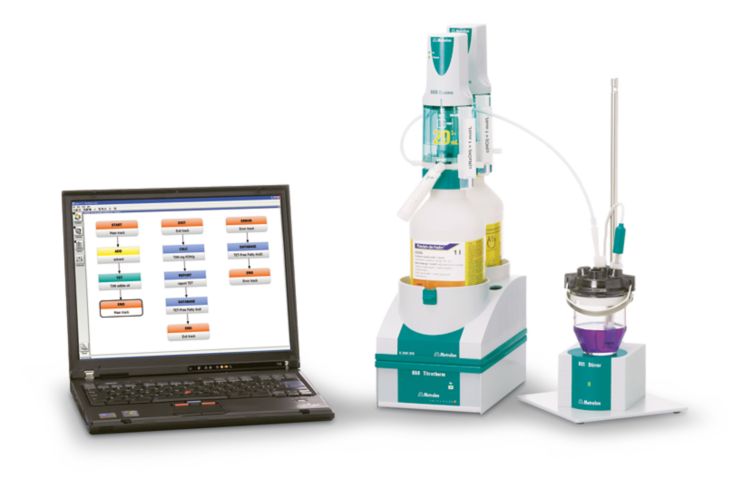Iron sucrose injections are used during the treatment of iron deficiency anemia. They contain a mixture of ferric iron (Fe3+) and ferrous iron (Fe2+). Ferrous iron content may be determined by subtracting the ferric iron content from the total determined iron content. Yet, this increases the measurement error due to error propagation. Alternative determination of iron(II) with cerium(IV) by potentiometric titration may be hampered, as the equivalence point cannot be determined unequivocally.
Determination by thermometric titration is a more robust and therefore more reliable alternative, as this method is unaffected by the sample matrix.
Here, the endpoint of the titration is indicated by a fast responding thermometric sensor. Endpoint detection is further improved by spiking the sample with 0.2% ammonium iron(II) sulfate (FAS), increasing the reliability of the determination. Compared to potentiometric titration, thermometric titration is faster and more convenient as no sensor maintenance is required. One determination takes about 2–3 minutes.
The method is demonstrated for three batches of iron sucrose solution.
The contents of several ampoules from the same batch are combined in a centrifuge tube previously flooded with nitrogen. The centrifuge tube is capped tightly afterwards to prevent the entrance of air.

An 859 Titrotherm which is equipped with a Thermoprobe and controlled by tiamoTM is used for this application.
An aliquot of sample is weighed directly into the titration vessel. Both the spike solution (ferric ammonium sulfate, FAS) to improve the detection of the endpoint and diluted sulfuric acid solution are dosed to the sample. The mixture is then made up to a total volume of approximately 30 mL with deionized water. The sample is titrated with standardized ceric ammonium nitrate until after the exothermic endpoint.
The analysis demonstrates acceptable and reproducible results with a clear exothermic endpoint. The results are summarized in Table 1, and an example titration curve is displayed in Figure 2.
| Batch | Fe(II) / % | SD(abs) / % |
|---|---|---|
| 1 | 0.238 | 0.001 |
| 2 | 0.220 | 0.007 |
| 3 | 0.227 | 0.003 |
The determination of ferrous iron by thermometric titration is a quick and reliable method to assess the Fe2+ content alone, independent of its sample matrix. Furthermore, only one titration is necessary, whereas potentiometric titration requires two.
The Thermoprobe does not require any maintenance nor conditioning or other preparation steps, making thermometric titration easy and convenient.
Internal reference: AW TI CH1-1268-01201
 Compartir la aplicación
Compartir la aplicación
 Descargar PDF
Descargar PDF